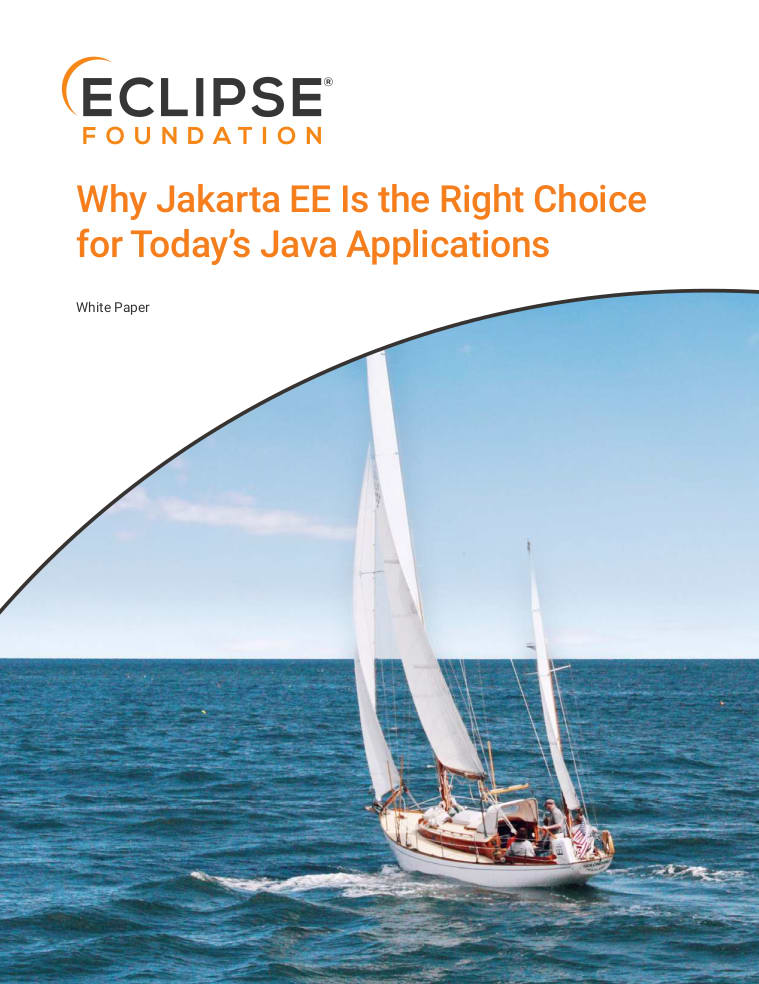Over the past year, the Eclipse Foundation spoke to leading Java developers around the world to discuss why they rely onJakarta EE and the unique benefits of using Jakarta EE technologies. Their input is captured in our white paper, which describes the important advantages Jakarta EE offers today and for the future.
Download the Jakarta EE white paper!
They’re Looking Ahead, Not Back
With Jakarta EE’s long history as Java EE, it’s sometimes easy for developers to dismiss the technology as yesterday’s approach. But Jakarta EE technologies are embedded, and relied upon, in a way no other technologies are. Here are some examples you might not be aware of:
- Apache Tomcat implements several Jakarta EE specifications
- Eclipse Jetty is a certified implementation of Jakarta Servlet 5.0
- Spring Boot embeds Eclipse Jetty or Apache Tomcat as a runtime
Open Specifications Bring Important Advantages
One of the advantages every one of the developers raised was the value of the specification-based approach to technologies in Jakarta EE.
The clear boundary between fully tested specifications and underlying implementations means developers can easily switch between the implementations with minimal impact on the application code. This agility saves considerable time, effort, and money when changes are required.
Jakarta EE Provides a Unique Combination of Features and Functions
The developers also described a combination of strategic and technical advantages that aren’t available in any other platform. Some of the main Jakarta EE benefits they noted include:
- Stability and backward compatibility. Jakarta EE provides a mature and proven foundation for innovation that allows organizations to fully leverage the investments they’ve already made in enterprise Java applications.
- Architectural flexibility. Organizations can support cloud-based microservices architectures, as well as traditional, monolithic architectures. They can also seamlessly incorporate newer technologies, such as MicroProfile, Docker containers, and Kubernetes orchestration.
- Speed and simplicity. A Jakarta EE application can be set up with significantly less configuration compared to other frameworks.
- Development and deployment freedom. Developers can use any Jakarta EE-compatible runtime, and they can implement and blend whichever aspects of the application server are needed to leverage Jakarta EE capabilities in a modern and efficient way.
- Longevity. The open, vendor-neutral, and community-driven approach at the Eclipse Foundation ensures applications developed using Jakarta EE will remain relevant and usable over the long term.
Get the Full Story
These insights are just a few of the reasons leading Java developers remain committed to Jakarta EE. For the complete story, download the white paper.
Visit the Jakarta EE website to learn more about Jakarta EE and explore the Jakarta EE specifications.






Discussion (0)